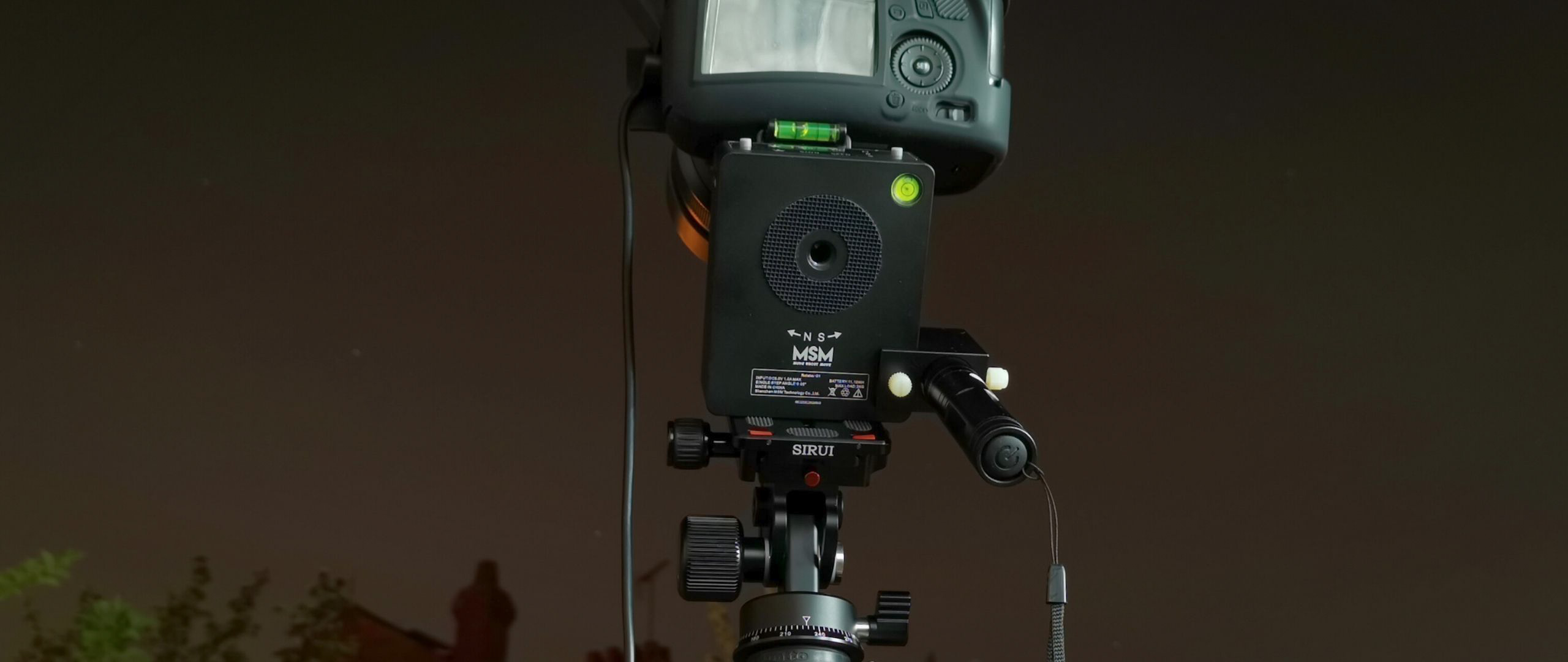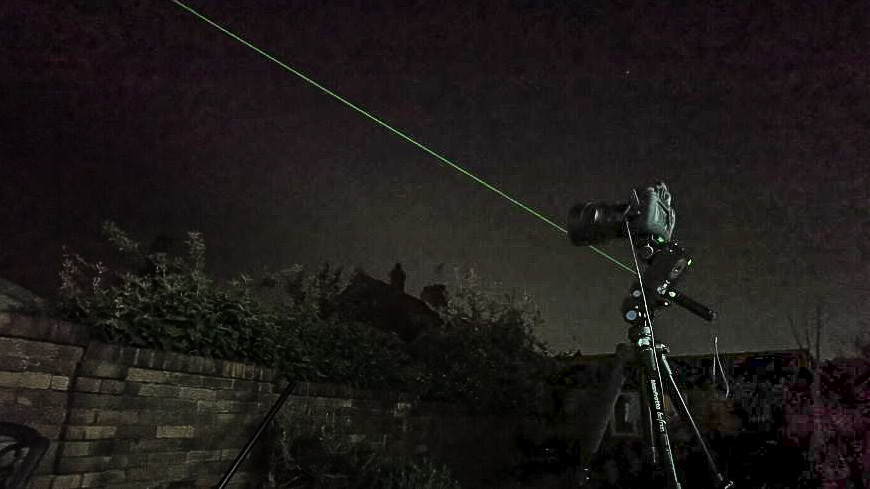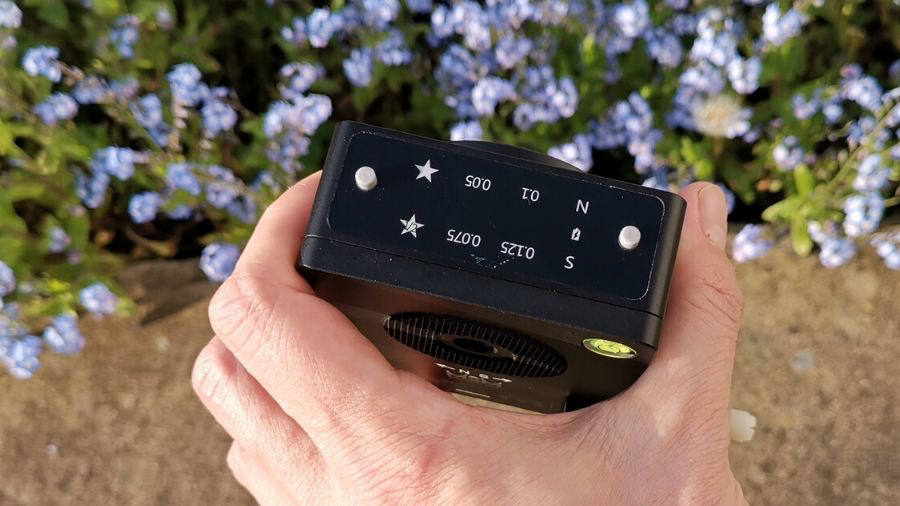Digital Camera World Verdict
Lightweight and portable, easy to use and with accurate star-tracking, this little rotator is ideal for those wanting more from their wide-angle Milky Way and star-field photography, though battery life is relatively short.
Pros
- +
Easy laser-guided polar alignment
- +
Accurate for 60 seconds+ long exposures
- +
Lightweight but sturdy build
- +
Also does motion timelapses
Cons
- -
Some fiddly screws (to lose)
- -
Wide-angle lenses work best
- -
Tricky to set-up in daylight
Why you can trust Digital Camera World
Can you find Polaris, the North Star? If you can, a whole world of nightscape photography is open to you. Either way, a rotating star tracker like the updated Move Shoot Move (MSM) is a fine upgrade for night photographers (and time-lapsers).
The Earth rotates so stars are not stationary relative to us. In fact, our planet rotates once every 23 hours 56 minutes and 4 seconds. That means that stars blur after a long exposure – with exposures of 25-30 seconds or more when using a wide-angle lens. However, Earth’s rotational axis goes almost through Polaris, so if you can align a moving platform with it, you can then expose for much longer because your camera is now moving in sync with the Earth’s rotation.
That’s handy because long exposure of two minutes or more are necessary to capture enough light, color and detail to properly reveal the Milky Way, as well as faint celestial sights such as galaxies, nebulae and even gas clouds. Unfortunately, most star-trackers are big, clumsy and expensive. Which is why the MSM is so useful, with a starter kit costing just $259 and being small enough to fit in your camera bag with ease. As a bonus, it also works as a platform for motion timelapse photography during the day or night.
• Move Shoot Move 2-in-1 Star Tracker - from $209
However, choose your bundle carefully and consider that you will need an additional ball head; some MSM bundle deals include a good value ball head that will prevent annoying set-up issues.
Design
This gadget is all about portability. It weighs 466g, which is nothing compared to some of its rivals. However, this startracker lacks a few basics. For example, there is nowhere to screw your camera onto. Yes, that’s right – it’s just got a hole. In the box is a stud screw that you have to physically screw-in to the trackpad before you can attach a camera. Is that screw going to survive a trip into the countryside at night? Probably not. A bigger all-in-one built-in design would be much, much better. That’s saying nothing of the need to take a screwdriver with you into the bush.
Polar alignment
Aligning a star tracker is easy if you know how to find Polaris (the North Star), which Earth’s axis points at. While most star trackers make you locate Polaris in the crosshairs of a small built-in polarscope, the MSM instead gives you a green laser light torch. It’s clamped-on using a small bracket that has tiny plastic screws. Though that’s a neat, lightweight (at 103g all-in) solution, the contraption is a little fiddly.
The best camera deals, reviews, product advice, and unmissable photography news, direct to your inbox!
Aligning the MSM using that green laser was fast and accurate. However a word of caution; green lasers of this power are controlled because of a perceived danger to pilots in passing aircraft.
At the time of this review (during the COVID-19 lockdown) there were almost zero aircraft in the sky, but that’s not going to be the case for very long. So before you use the laser, check for aircraft – and don’t wave it around while you’re taking long exposure photos.
Set-up
The easiest way to set-up the MSM is to use two ball-heads, one either side of MSM, on a sturdy tripod. The instructions in the box are woeful; nowhere does it tell you want kind of ball-head to use (our review sample arrived without the optional extra MSM ball-head), and as bad luck would have it our spare ball head’s fixings interfered with the base of the MSM, so much so that it was never going to work. One expensive purchase of a new tripod head later, and more mis-steps with using a 400mm lens (again, no advice was given in the box about the lens), and we had a wide-angle lens ready to go.
Move Shoot Move 2-in-1 Star Tracker: performance
In practice, the best way to set-up MSM is to set the tripod down and then make sure it’s level. Align the rotator with Polaris, attach your second ball head and camera, and then touch-up the balance by aligning again (it may have gone out of whack with the extra weight of the camera and lens).
However, with all that done, it’s surprisingly accurate. Sadly we had to test it in a back garden amid a lot of light pollution, due to the cornavirus lockdown. But for initial tests it was immediately clear that shots using wide-angle (18mm) – using exposures of up to three minutes – resulted in really sharp stars. It gets less impressive as you magnify, of course, and over about 70mm things can go awry. But that’s OK; MSM is designed for Milky Way photography and star-fields, not remote galaxy close-ups (besides, it can’t take the weight of big zoom lenses).
As a bonus, it’s got another mode for time-lapse; it can move a camera at two different speeds as it snaps away, creating a motion time-lapse that could be handy for landscape photographers in both daylight and for capturing dusk and the rise of the Milky Way, for instance. Though we did find that setting-up the MSM in daylight was challenging since the various modes are indicated using lights that are invisible in any ambient light.
One of the main issues we have with the MSM is its relatively short five-hour battery life. Since setting-up and taking multiple long exposure shots can take some time, that could be an issue. Happily, its battery is refueled via USB-C, so all you need to do is take a portable power bank with you into the field and you can recharge it relatively easily.
Move Shoot Move 2-in-1 Star Tracker : verdict
This rotator is all about a discipline known variously as nightscaping or landscape astrophotography, and not for pure astrophotography per se. Unable to support telephoto zoom lenses, you’re not going to get crystal-clear ‘deep sky’ sights, but rather it’s for capturing more detailed night sky vistas. Essentially, it’s for increasing the wow factor in wide-angle Milky Way photographs. It’s a good value, innovative and nicely-sized addition to a kit-bag, but MSM is not perfect. It’s portable, it’s easy to use and it’s accurate, but with a short battery life and a few too many fiddly items to lose, this little rotator does demand a well-organized user.
• Move Shoot Move 2-in-1 Star Tracker - from $209
Read more
The best star tracker camera mounts
The best lenses for astrophotography
The best camera equipment for astrophotography
The best telescopes for astrophotography
The best CCD cameras for astrophotography

Jamie has been writing about photography, astronomy, astro-tourism and astrophotography for over 15 years, producing content for Forbes, Space.com, Live Science, Techradar, T3, BBC Wildlife, Science Focus, Sky & Telescope, BBC Sky At Night, South China Morning Post, The Guardian, The Telegraph and Travel+Leisure.
As the editor for When Is The Next Eclipse, he has a wealth of experience, expertise and enthusiasm for astrophotography, from capturing the moon and meteor showers to solar and lunar eclipses.
He also brings a great deal of knowledge on action cameras, 360 cameras, AI cameras, camera backpacks, telescopes, gimbals, tripods and all manner of photography equipment.






